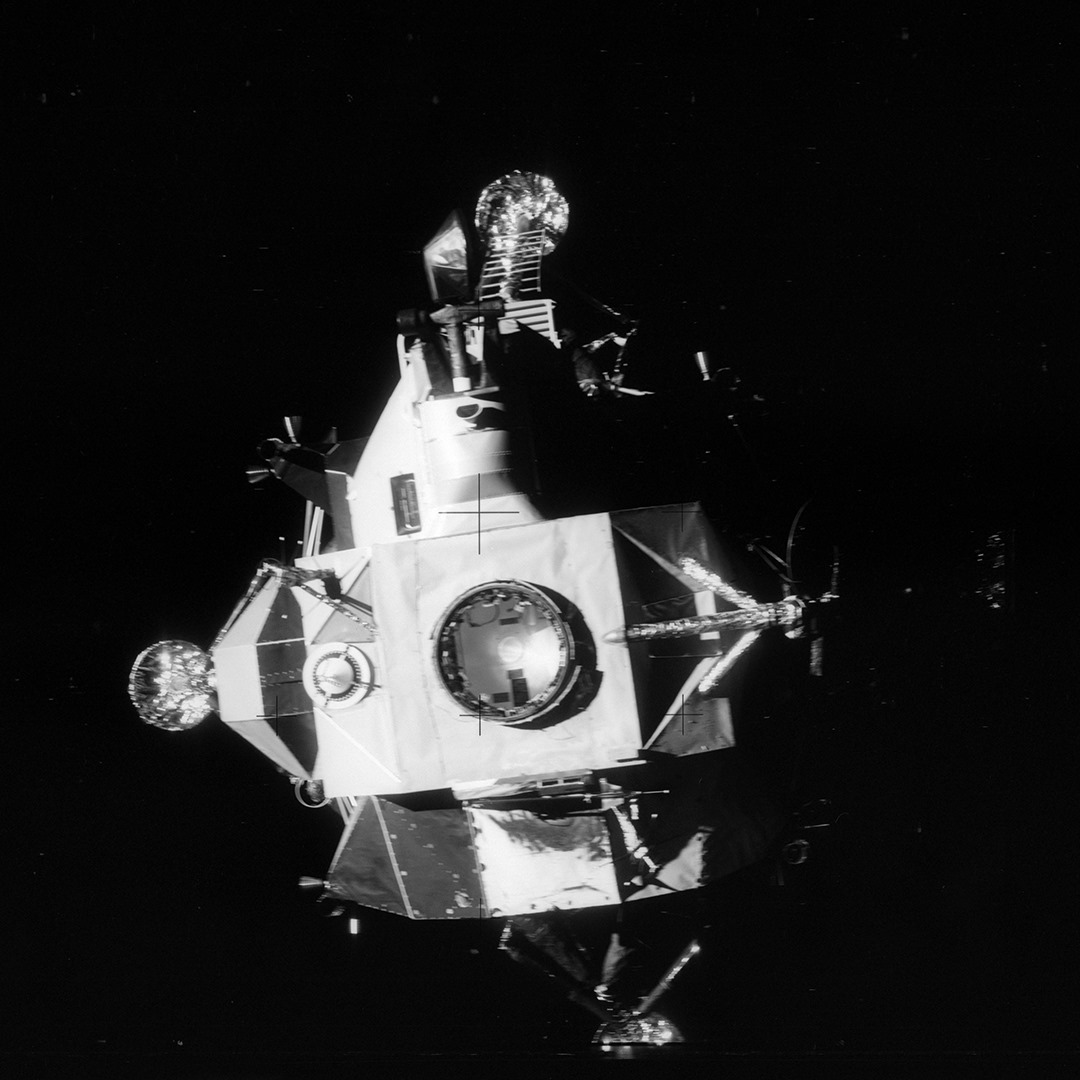
Apollo 13: Goodbye, Aquarius
The Lunar Module (LM), Aquarius, was jettisoned just before reentry. Jettisoning Aquarius happened at the last possible minute, to ensure that the batteries on the Command Module (CM) Odyssey had enough power to last through reentry & splashdown. 1/6
The Lunar Module (LM), Aquarius, was jettisoned just before reentry. Jettisoning Aquarius happened at the last possible minute, to ensure that the batteries on the Command Module (CM) Odyssey had enough power to last through reentry & splashdown. 1/6

Aquarius was called on to perform tasks no other LM had done in this history of the Apollo program. From midcourse corrections to life support, the LM performed above expectations for a craft that was initially designed to land two astronauts on the Moon. 2/6
This black & white image shows Aquarius just after it was jettisoned. Notice the ladder on the LM descent stage, as well as the footpads that would have touched down on the surface. This stage would have stayed on the Moon had A13 not been plagued by the loss of O2 tank 2. 3/6
Usually, the LM was jettisoned in lunar orbit, but during A13, the crew had to discard the spacecraft before entry. After consulting with engineers, the Grumman Corp believed that building up pressure in the tunnel between the CM and LM could be used to separate spacecraft. 4/6
Jettisoning Aquarius went off without a hitch, leaving the crew of Odyssey free to return home. Aquarius also returned to Earth, but the spacecraft was not designed to survive reentry. 5/6
Aquarius burned up in Earth's atmosphere, the only part of the module to survive is the hardened module that contained the radioisotope thermoelectric generator (RTG) that would have been used on the lunar surface for Apollo 13's Apollo Lunar Surface Experiments Package. 6/6
• • •
Missing some Tweet in this thread? You can try to
force a refresh












